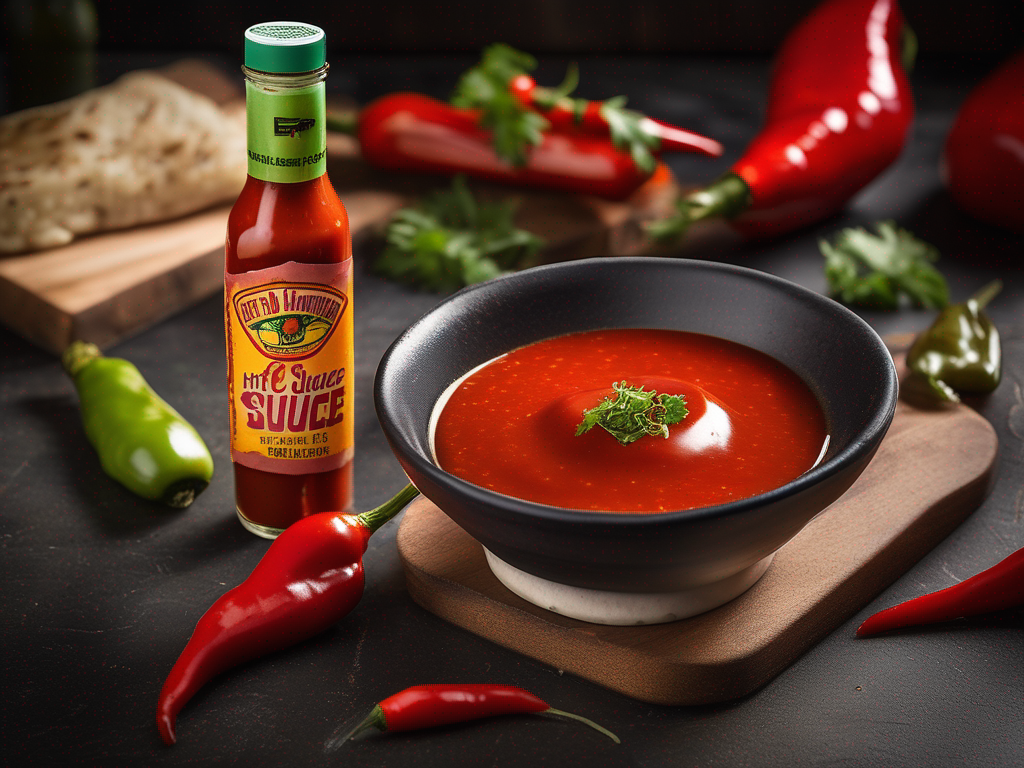
Signs that Hot Sauce has Gone Bad
Get Your Free Food Safety Cheat Sheet
30 most common foods with instant answers. Print it and stick it on your fridge—completely free!
Signs that Hot Sauce has Gone Bad
Hot sauce is a popular condiment that adds heat and flavor to a variety of dishes. Whether you prefer the fiery kick of a habanero sauce or the tangy sweetness of a sriracha, hot sauce can enhance the taste of many meals. However, like any food product, hot sauce can go bad if not stored properly or if it has been on the shelf for too long. In this blog post, we will explore the signs that indicate your hot sauce may have gone bad and provide tips on how to store it to ensure its longevity and safety. (Hot sauce)
Understanding Hot Sauce Shelf Life
Hot sauce, like many condiments, typically has a long shelf life due to its high acidity and heat levels. However, it is essential to pay attention to the expiration date on the bottle and store it correctly to maintain its quality. Here are some general guidelines for hot sauce shelf life:
Factors Affecting Hot Sauce Shelf Life
- Acidity: The high acidity levels in hot sauce help preserve it by inhibiting the growth of harmful bacteria.
- Heat: The capsaicin in hot peppers also acts as a natural preservative, extending the sauce's shelf life.
- Storage Conditions: Proper storage, such as keeping the hot sauce in a cool, dark place, can help maintain its quality over time.
Signs that Hot Sauce has Gone Bad
While hot sauce can last for a long time, it is essential to know the signs that indicate it may have gone bad. Consuming spoiled hot sauce can lead to foodborne illnesses, so it is crucial to be vigilant. Here are some common signs that your hot sauce has gone bad:
Visual Signs
- Mold Growth: If you see any mold or unusual growth on the surface of the hot sauce, it is a clear indicator that the sauce has spoiled.
- Changes in Color: Any significant changes in color, such as darkening or discoloration, can signal that the hot sauce is no longer safe to consume.
- Separation: If the ingredients in the hot sauce have separated and cannot be mixed back together, it may be a sign of spoilage.
Smell and Taste
- Off Odor: Spoiled hot sauce may have a foul or off-putting smell that differs from its usual aroma.
- Off Taste: If the hot sauce tastes sour, bitter, or generally unpleasant, it is best to discard it.
Texture
- Consistency Changes: Any changes in the texture of the hot sauce, such as becoming chunky or slimy, indicate that it has gone bad.
Storing Hot Sauce Correctly
To prolong the shelf life of your hot sauce and ensure its safety, follow these tips for proper storage:
- Cool and Dark: Store hot sauce in a cool, dark place away from direct sunlight and heat sources.
- Refrigeration: While hot sauce does not require refrigeration, storing it in the refrigerator can extend its shelf life.
- Tightly Sealed: Always ensure the hot sauce bottle is tightly sealed after use to prevent air and moisture from entering.
- Avoid Contamination: Use clean utensils when scooping out hot sauce to prevent contamination.
Conclusion
In conclusion, hot sauce is a versatile condiment that can add flavor and heat to your favorite dishes. By understanding the signs that indicate hot sauce has gone bad and following proper storage practices, you can enjoy your hot sauce safely and deliciously. Remember to check for visual signs of spoilage, such as mold growth or color changes, and trust your senses when it comes to smell and taste. With the right precautions, you can continue to enjoy the fiery kick of hot sauce without any worries about its safety. [Hot sauce](/food/hot sauce) (Hot sauce)
Authoritative Food Safety References
These agencies and university labs inform every tip and health precaution we publish.
USDA FoodKeeper – Cold Storage Guidelines
Official refrigerator, freezer, and pantry timelines maintained by the U.S. Department of Agriculture.
Visit USDA FoodKeeperFDA Produce Safety Rule & Grower Guidance
Field-to-fridge handling practices that prevent contamination of fruits, vegetables, and leafy greens.
Visit FDA Produce SafetyCDC Foodborne Illness Prevention Hub
Surveillance-backed guidance on pathogens, symptoms, and steps to reduce foodborne illness risk.
Visit CDC Food SafetyUC Davis Postharvest Technology Center
University research detailing optimal storage atmospheres for produce after harvest.
Visit UC Davis PostharvestPenn State Extension – Home Food Preservation & Safety
Peer-reviewed extension bulletins on safe canning, chilling, and reheating practices.
Visit Penn State ExtensionGet Your Free Food Safety Cheat Sheet
30 most common foods with instant answers. Print it and stick it on your fridge—completely free! Want more? Upgrade to the complete guide with 70+ foods.
Scan your food directly and get instant safety info using our AI-powered camera feature.